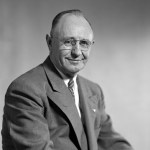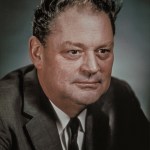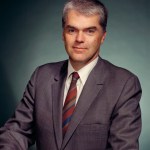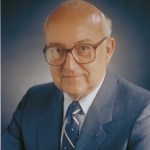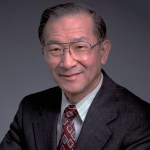
Smith J. DeFrance
Former Engineer-in-Charge and First Director at NASA’s Ames Research Center
Smith J. “Smitty” DeFrance served as the first and only Engineer-in-Charge of Ames Aeronautical Laboratory at Moffett Field, California. He later became the laboratory’s first Director with its transition to Ames Research Center after the founding of NASA in 1958.
Born in 1896, DeFrance was a native of Battle Creek, Michigan. At the outbreak of World War I, he flew SPAD biplanes over France as a fighter pilot and flight commander in the 139th Aero Squadron, where he was credited with two air-to-air victories and earned a Silver Star medal. He then returned to his home state and attended the University of Michigan, which was the second American university to offer a degree in aeronautical engineering. After earning a bachelor of science degree in aeronautical engineering, he joined Langley in July 1922 as employee number 63.
He spent the first 18 years of his career with the NACA working at Langley, where he gained fame as a test pilot in flight projects and as a designer and manager of unique wind tunnels that gained worldwide recognition. With a special interest in electrical engineering, DeFrance was initially assigned the task of designing the balance system in the newly opened Variable Density Tunnel, but soon moved to the flight test organization. As assistant head of the Langley flight research section, he conceived new instruments and procedures on how to use them. From this leadership position, DeFrance helped professionalize the role of experimental test pilot by developing novel methods of collecting pressure data in flight and of photographing flightpaths.
In August 1924, DeFrance was flying a Curtiss Jenny with a junior engineer named Steven Bromley. During the flight, DeFrance lost control and the plane crashed, killing Bromley and severely injuring DeFrance, who spent nine months in Walter Reed Hospital and lost an eye. After recovering, he promised his wife that he would never fly on an airplane again–and he didn’t.
After the accident, DeFrance stayed on the ground, but continued to work on two research flight activities: defining air pressures over dirigibles (the centerpiece of the new Navy air fleet); and braking techniques to reduce the ground roll of aircraft after landings. After 7 years at Langley, he moved completely into engineering and research management.
In February 1929, following the highly successful contributions of Langley’s revolutionary Variable Density Tunnel and the Propeller Research Tunnel, the NACA Main Committee authorized construction of a 30 by 60-foot Full Scale Tunnel at Langley, one of the most important facilities in the early history of the NACA. DeFrance was tasked to manage the construction and early research applications of the new tunnel as principal aeronautical engineer.
Construction of the massive facility was completed on time and under budget in May 1931. It was the largest wind tunnel in the world at the time, paving the way for unprecedented aerodynamic studies of full-scale aircraft. DeFrance then became head of the Full Scale Tunnel group, managing research priorities and serving as head researcher. Having the ability to test full-scale, powered airplanes, he published results of investigations of the effects of retractable landing gear and wing surface condition on aerodynamic performance. He also led studies requested by the military on engine cooling and drag reduction. The highly successful facility continued to operate in support of the nation’s major aerospace projects for almost 80 years, until it was demolished in 2011, far beyond DeFrance’s vision when he designed it in the 1930s.
DeFrance had firmly established himself as a premier designer and operational manager of major wind-tunnel facilities. In the mid-1930s, he was promoted by Langley’s Engineer-in-Charge Henry J. E. Reid to become Assistant Chief of the Aerodynamics Division, directing the operations of Langley’s four largest and most intensively used wind tunnels: The Full Scale Tunnel, the 19-Foot Pressure Tunnel, the Propeller Research Tunnel, and the 8-Foot High-Speed Tunnel.
In February 1939, DeFrance was selected by NACA Headquarters to be the leader of construction and operations of the new Ames facility in California. DeFrance initially devoted his attention to the design, construction and staffing issues of the new laboratory while at Langley. In August 1940, he left Langley to serve as the first Engineer-in-Charge of Ames. DeFrance had so impressed his research peers at Langley that many of them transferred to Ames with him.
He continued to lead Ames until his retirement in 1965. During his tenure as Director, more than 19 major wind tunnels were built and entered operational service at Ames. He was the only director of Ames during the NACA era, and served in that capacity for 25 years. He passed away in 1985.



























